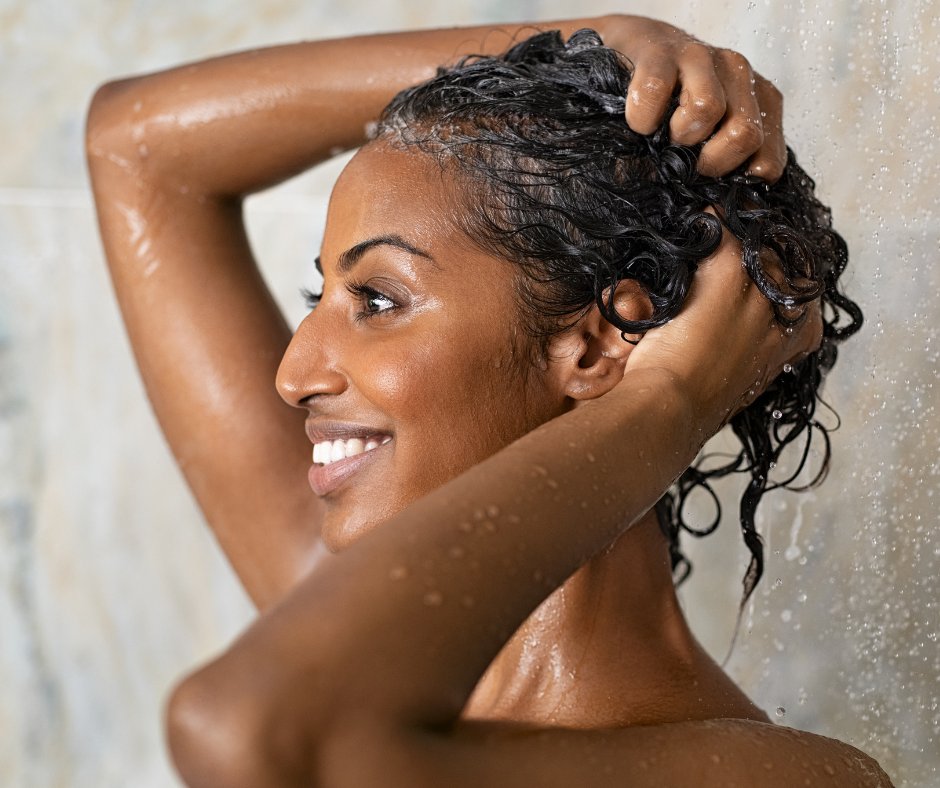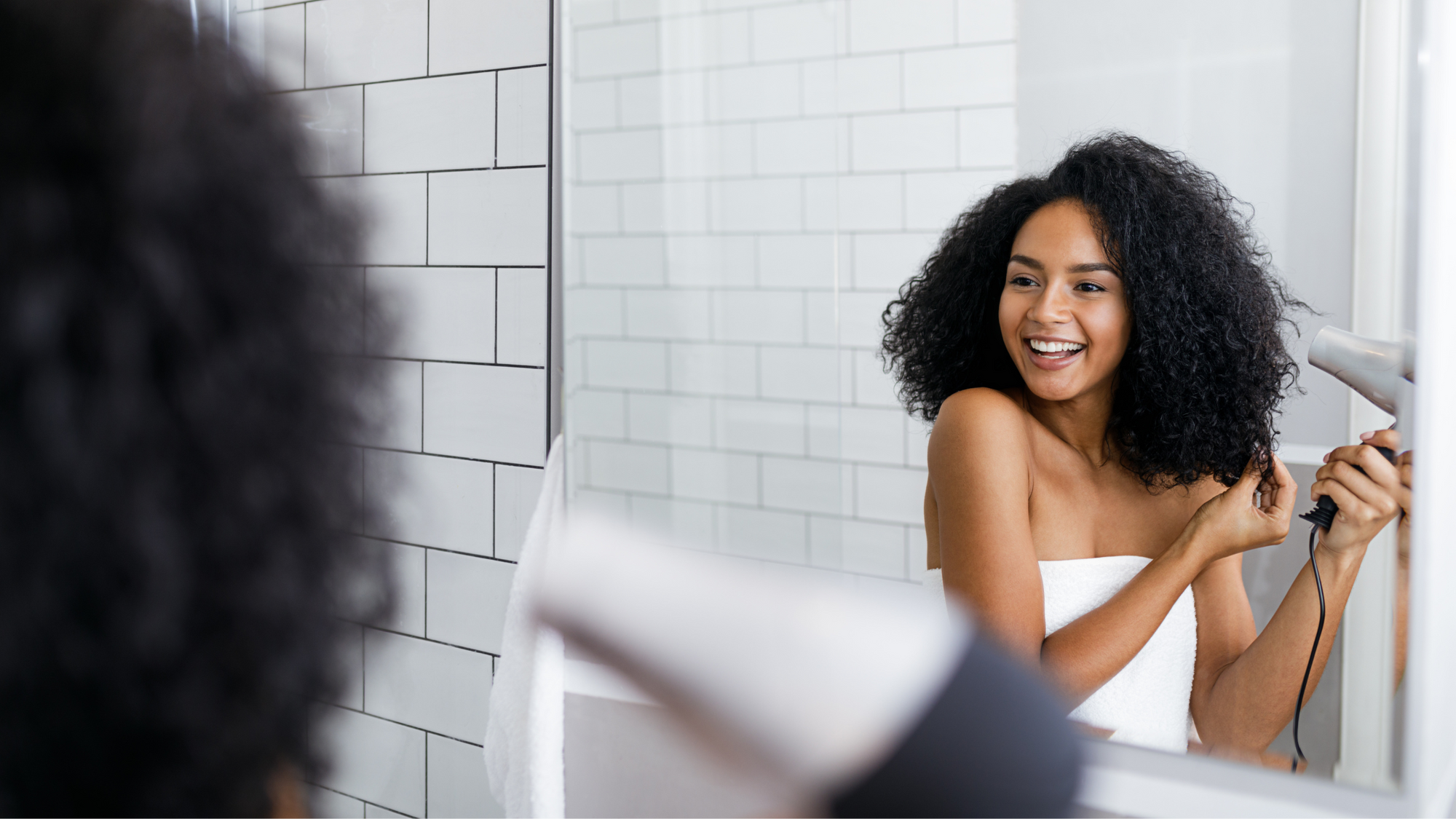Shampooing your hair sounds simple, right? However, there are definitely people who aren't getting the best results they could be getting from their wash days, whether it's because they're in a hurry, have limited mobility in their hands, or aren't using the right kind of shampoo for their hair. We're always here to help you get the most out of your curls; sometimes that means starting with the basics!
Let's talk a bit about the 'right way' to shampoo your hair and how to troubleshoot some common issues we come across when talking with Curl Warehouse customers.

When it comes to shampooing curly hair, be sure to:
1. Choose the Right Shampoo
Curly hair tends to lack moisture, so we need to hold on to as much as we possibly can. This means that a lot of curl-specific shampoos often contain ingredients that are very gentle on our curls and don't strip the necessary oils from our scalps. It also means that they don't cut through build up, sweat, and minerals that sulfate-containing shampoos do. Because of this, it's important to use a stronger shampoo periodically. This is often referred to as a clarifying shampoo. We would recommend using this every 2-4 weeks based on your needs (how much build up you get, using hard water, whether your scalp is oily, etc.). Check out the Malibu C Hard Water Wellness Shampoo or Un-Do-Goo, two of the most popular clarifying shampoos at Curl Warehouse.
To learn more about the differences between "regular" shampoos and curly shampoos, check out our blog post: How Are Curly Shampoos and Conditioners Different From Other Ones?
2. Wet Hair Thoroughly Before Shampooing.
It seems intuitive, but if your hair isn't fully saturated with water before you shampoo, it is much harder to spread the product evenly which means you may use far more than you actually need. This is especially true for highly concentrated brands like Original Moxie and Innersense Organic Beauty. This step of thoroughly soaking your hair also helps to dislodge dirt and oil along your scalp before you even start shampooing. It may take a few minutes if your hair is low porosity and water tends to bead on your hair strands. We say it a lot here at Curl Warehouse: When in doubt, use more water!
3. Wash Your Scalp.
Your hair will get residual shampoo as you rinse. Your scalp is really where you want to focus your efforts. Don't put your shampoo in and immediately rinse it out. Using the pads of your fingers or a massaging shampoo brush, massage your scalp and really get in all of those little forgotten areas like the back of your ears and the nape of your neck.
4. Repeat if Necessary.
A lot of curly shampoos do not lather. This can be a big adjustment if you're used to using sulfate shampoos. If you are used to your chosen shampoo lathering and it doesn't, it could be that you need to try a double-cleanse. Often hair that is extra dirty, product-y, or oily won't produce a lather on the first wash.
5. Rinse Thoroughly.
You should not feel like there is any product left after shampooing. Shampoos are not the type of products we refer to as "heavy" or "lightweight" simply because they don't stay in your hair. They may have richer ingredients, which can be great for dry hair and scalps, but you should not feel anything left at your roots after you have thoroughly rinsed your hair.

Troubleshooting Tips for Shampooing Curly Hair
Conditioning agents are meant to partially coat the hair and resist being fully washed out. Shampoo ingredients will wash out, and take product residue etc. with them.
If you do feel like there is a residue left on your hair after you shampoo or your hair does not feel clean, it is likely product or oil/sebum build-up. Either you or your shampoo are not doing an effective enough job of cleansing or rinsing.
Consider:
1. Using a stronger shampoo. Not all curly shampoos are created equally. Look for shampoos with stronger (but still gentle) cleansers, such as sodium lauroyl sarcosinate, sodium methyl cocoyl taurate, or sodium cocoyl isethionate. Some curly shampoos are really more like co-washes (conditioner washes) in disguise, and may not really have any cleansing ingredients at all!
Shampoos with one or more of these slightly stronger cleansing ingredients include:
- AG Hair Curl Fresh Shampoo
- Curl Wow Hooked 100% Clean Shampoo
- VERB Ghost Shampoo
- Bounce.Me Curl Shampoo
- Jessicurl Gentle Lather Shampoo
- Olaplex No. 4 Bond Maintenance Shampoo
- Malibu C Curl Wellness Shampoo
2. Clarifying more often. It is okay to clarify as often as you need to, in order to feel like your hair is clean.
3. Rinsing more. If you have trouble getting all of your shampoo out, try sectioning your hair for rinsing, either with your hands or a styling clip. This is especially helpful for thick hair. You can also try rinsing upside down (plug your nose!).
4. Trying the double cleanse method. Essentially, wash your hair twice, really focusing on massaging your shampoo into your roots and scalp. You may find this especially useful if you are an infrequent shampoo-er.
5. Using a massaging shampoo brush. If you struggle with getting that clean feeling or have mobility issues with your hands or fingers, a massaging shampoo brush can really help loosen stubborn dirt, dry skin, oils, and other build up along your hairline. Plus, it the scalp massage is lovely!
6. Washing your hair more frequently. If you often try to go as long as you can between shampoos, the simplest way to avoid under-washing your hair is just to wash more often! There is no award for going as long as possible between shampoos, and doing this can cause other skin issues due to dirt and bacteria sitting for long periods of time on the scalp.
Still need help choosing a shampoo? Email us any time at products@curlwarehouse.com or visit us in store for product advice and tips.


